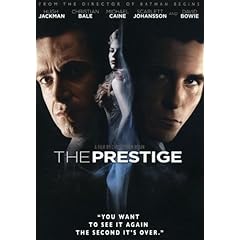This has been a good winter for quality films, and SF fans can count themselves lucky that two recent releases are among the best films of the year. Neither could be called a fun movie, but intelligent and provocative, they're good for a thoughtful date. Coincidentally, both are from Mexican directors, though one is set in England and the other is a Spanish language film set in Spain.
The first is Children of Men, from director Alfonso Cuaron, whose credits include Harry Potter & the Prisoner of Azkaban, Y Tu Mama Tambien and A Little Princess. Obviously the man has range as well as the ability to adapt English novels to the screen. Children is an adaptation from P.D. James, best known for her Dalgleish mystery novels.
But this is social science fiction par excellence, in the best tradition of H.G. Wells. "What if...?" is the premise for this kind of story, and the what if in this case is that people stop having babies. It portrays a world disintegrating in despair after nearly two decades of childlessness. Without hope for the future, what are we? What do children mean to us as individuals, as neighbors, as a society, as people who grub for power and advantage?
The film asks all these and many more, in the compelling story of a writer who has given up, his ex-wife who has taken refuge in revolution, and their quest to help a young woman who is miraculously pregnant. Poignant and breathtaking, though often violent, with terrific performances by a cast including Clive Owen, Julianne Moore and Michael Caine.
The next film is just as good, though painted on a smaller canvas. Following the Spanish Civil War, a brutal fascist capitan leads a detachment of soldiers against loyalist guerillas in the hills. He brings his pregnant wife and step-daughter to join him. The alienated girl, with only a sympathetic maid to count as a friend, finds a labyrinth and is soon immersed in a fantastic world.
This is Pan's Labyrinth from writer-director Guillermo Del Toro (Hellboy, Blade II), who shows style, confidence and originality. In the world where the faun dwells below the garden labyrinth and fairies visit her room, the girl Ofelia undertakes the Hero's Quest. She braves difficulties, makes serious mistakes and displays immense courage as her quest becomes more desparate. Simultaneously, the real world situation of the family and the small military outpost grows more desparate, and the capitan grows more brutal. The movie is occasionally unpleasant to the point of horrific, but compelling in the excellence of its execution, bringing myth to life.



































